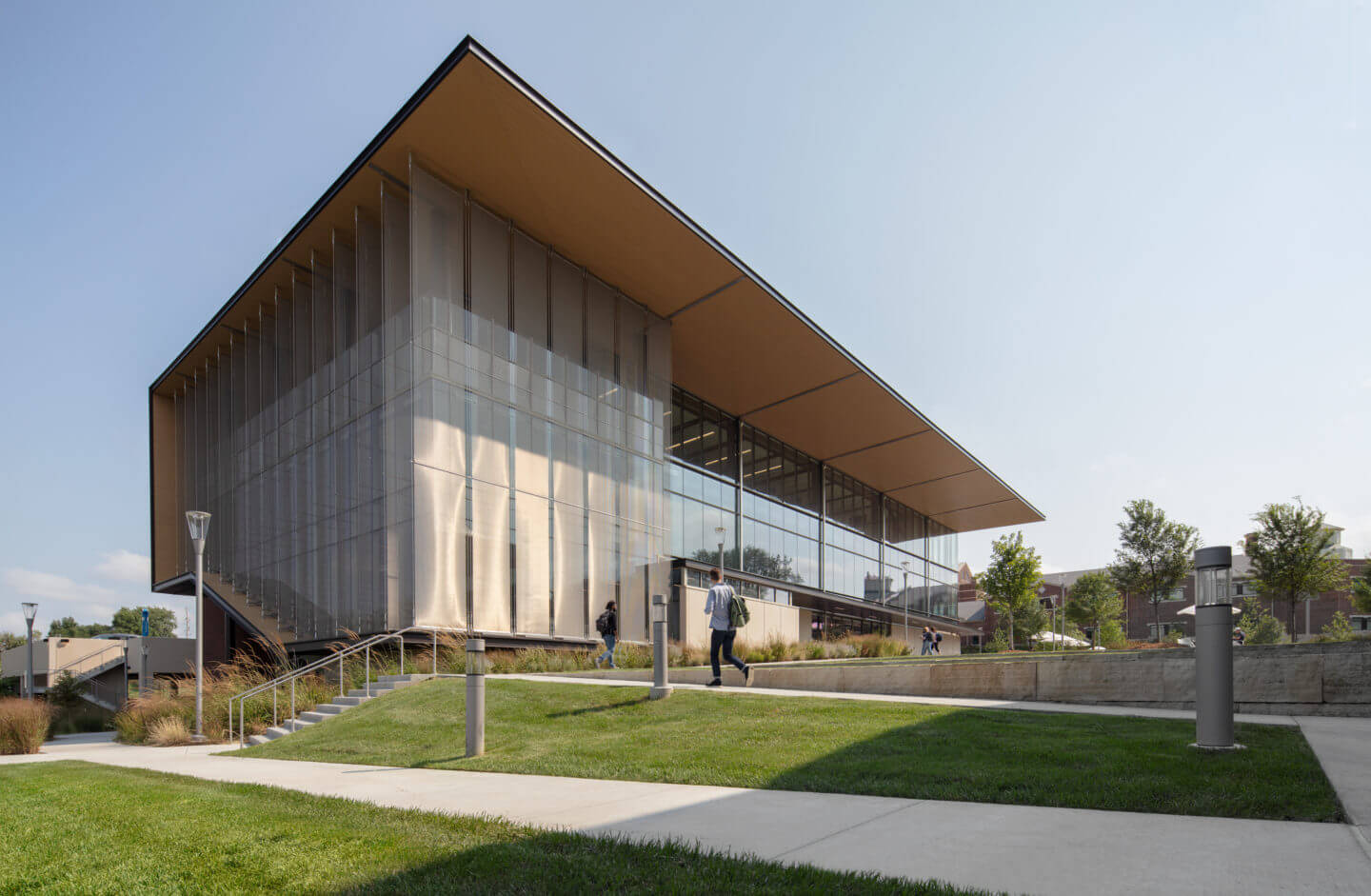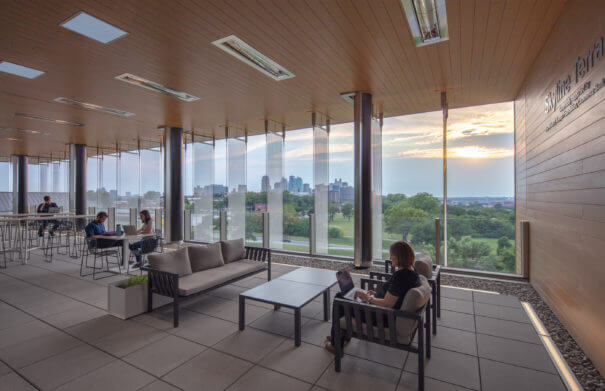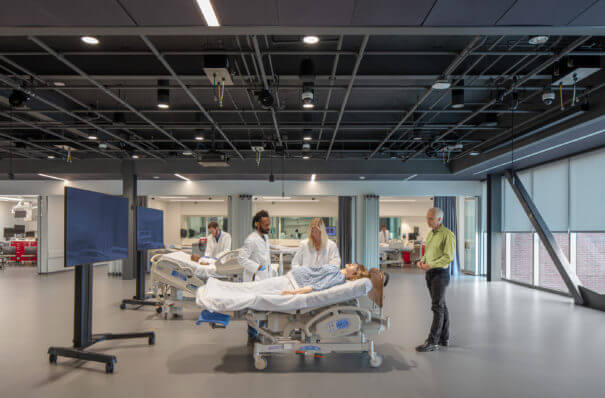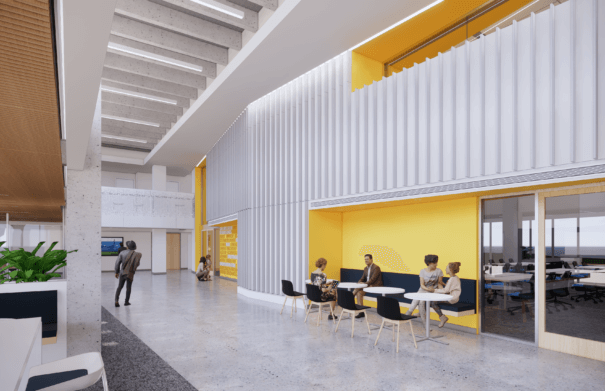Invest in Our Planet: Sustainability in Health Education
As we celebrate Earth Day, we reflect on this year’s theme: Invest In Our Planet.
The notion of investing in our planet resonates with the design community, as those who shape the built environment and serve as stewards as our clients’ resources. Over time, the very definition of design has evolved to incorporate sustainability, making it an inherent component of design excellence and a call to action for our profession.
We believe that sustainable strategies not only offer our clients a return on their investment, but they also echo their commitment to supporting the health and wellbeing of the people who will experience the space. This is evident in our work with health education design.
This Earth Day, we are featuring health education projects that exemplify what it means to invest in the environment and, consequently, invest in future generations of people who will care for others.

Kansas City University, Center for Medical Education Innovation
KCU is a forward-thinking institution that values sustainable strategies across all university development, and CMEI serves as a model for future new construction projects on campus.
Through a combination of efficient building systems and site orientation, CMEI achieved a 47% reduction in energy use below baseline, which required new construction projects pursuing LEED v4 certification to achieve just a 5% reduction. The project earned LEED certification in Fall 2021.


In addition to the significant reductions in energy and water use, CMEI also focuses on users’ health and wellbeing. More than 75% of regularly occupied spaces have access to quality views, including a panoramic view of downtown Kansas City from the patio on the top level. The landscape surrounding the building doubles as a stormwater management system and an area where students and faculty can connect with nature near a wet pond and walking trail. Honing in on the details, more than 90% of the materials specified for the flooring, ceiling, and walls were classified as low-emitting, or products that do not release pollutants into the indoor environment.
Why this matters
Numerous studies have proven the positive effects that natural daylight and a connection to nature can have on students’ focus and mental health. With ample views through expansive windows, CMEI offers its students moments of respite from their rigorous studies. Also, the quality of materials in the finishes and furniture ensures that their time spent indoors can still support their physical health.
Rockhurst University, Sedgwick Hall
Guided by Jesuit values, the renovation of Sedgwick Hall is a manifestation of two core principles: care for our common home and care for the whole person.
The reuse of an existing building is inherently sustainable. By choosing to renovate their oldest building on campus instead of building new, the Sedgwick Hall project will have a significantly lower carbon footprint and save approximately 3 million pounds of carbon dioxide. With new, more efficient systems, the building is also anticipated to beat the AIA 2030 energy use baseline by 30%. Other sustainability-focused interventions include reusing some of the original materials throughout the building. Limestone that was removed from Sedgwick was repurposed in the construction of a new grotto for Rockhurst’s statue of Mary.

After a thorough programming process, the design team developed a concept that offers relief from the stressful nature of health education. Students will move between highly collaborative and social environments to more intimate spaces for focused study, providing options that accommodate individual preferences and needs. The design was also driven by inclusivity, creating gender-neutral restrooms, shared break rooms, mothers’ rooms, and an interfaith space for anyone who needs a quiet moment of prayer or reflection.
Why this matters
Incoming cohorts of students are demonstrating more passion and commitment to social causes. Rockhurst emphasized creating a place where all students can feel welcome, regardless of their religion, orientation, race, or socioeconomic status. This dedication to inclusivity will have a ripple effect on their students’ mental and emotional health, allowing them to focus on their studies in a safe, comforting place.
Both projects were designed in partnership with CO Architects.
